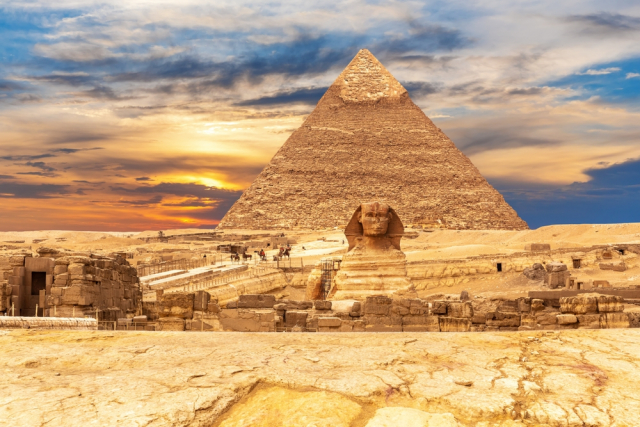Ancient Egypt – The Old Kingdom (2700-2200 BC)

The Age of the Great Pyramids
This podcast will appeal to anyone who wants to know more about this popular area of history and wants that information from one of the world’s leading academics on the subject.
Most of us have read an article, watched a documentary or visited a museum that has an ancient Egyptian artefact of some sort. The pyramids, mummies and animal-headed gods have been part of many of our educational journeys through the past. However, for so many of us ancient Egypt is an area where hundreds of years are condensed together and where myth and reality easily entwine.
To understand the 500 years of the Old Kingdom often comes in the form of oversimplified books for children or heavily detailed and daunting works of scholarship. That is why we have produced this new podcast, created and delivered by Professor Emeritus John Baines (University of Oxford). In it he explores key questions about what an ancient civilization is, what was the everyday life of the Egyptian people, what other civilizations or cultures it was surrounded by and interacted with and what is the true impact and legacy of the Old Kingdom.
The Old Kingdom
In ancient Egyptian history, the Old Kingdom is the period spanning c.2700–2200 BC. It is also known as the ‘Age of the Pyramids’ or the ‘Age of the Pyramid Builders’, as it encompasses the reigns of the great pyramid-builders of the Fourth Dynasty, such as King Sneferu, who perfected the art of pyramid-building, and the kings Khufu, Khafre and Menkaure, who constructed the pyramids at Giza.
Egypt attained its first sustained peak of civilisation during the Old Kingdom, the first of three so-called ‘Kingdom’ periods (followed by the Middle Kingdom and New Kingdom), which mark the high points of civilisation in the lower Nile Valley.
In this podcast Professor Emeritus Baines talks about the emergence of an early Egyptian civilisation, provides an introduction to the development and achievements of the Old Kingdom and discusses the evolution of hieroglyphics and their proliferation across the lower Nile Valley. Professor Baines also reflects upon ancient Egyptian cosmology, compares it to the systems developing in contemporary civilisations in the Near East and looks at the role of religion in Egyptian society.
1. When did you first come in contact with Ancient Egyptian history?
2. What is a civilisation?
3. When do we see the emergence of an early Egyptian civilisation? What sources do we have?
4. Why was Egypt such a fertile place for a civilisation to develop?
5. How does Egypt transform from a land of separate farming communities into a single unified state?
6. How is the state administered?
7. How was the state organised and divided?
8. When do we start to see the use of hieroglyphics? At what point do we see their widespread use?
9. Do we get any biographical information about kings/nobles within the tombs/pyramids?
10. To what extent does the Old Kingdom represent a revolution in architecture, art and technology? What fuels this transformation?
11. Which dynasty represented the golden age of the Old Kingdom?
12. What other civilisations existed alongside the Old Kingdom?
13. What do we know about the development of religion in this early period? How central was religion to the state and to everyday life?
14. When do we start to see and Egyptian cosmology?
15. How similar is Old Kingdom religion and cosmology to the religions of contemporary civilisations in the Near East?
16. What leads to the collapse of the Old Kingdom?
17. What was the legacy of the Old Kingdom?
18. Why does the Old Kingdom have such a strong place in our imagination?
In order to access the full content of the podcasts please Login or Join the HA.

